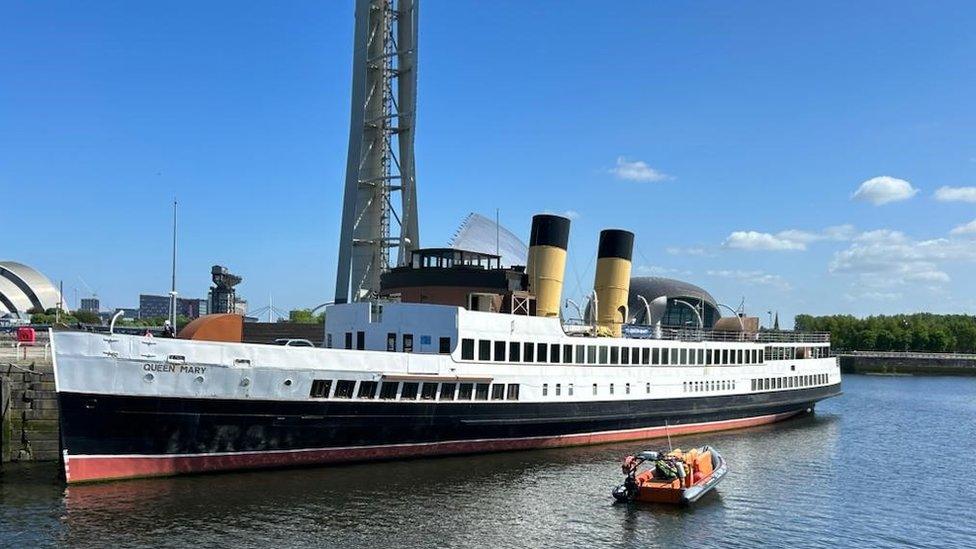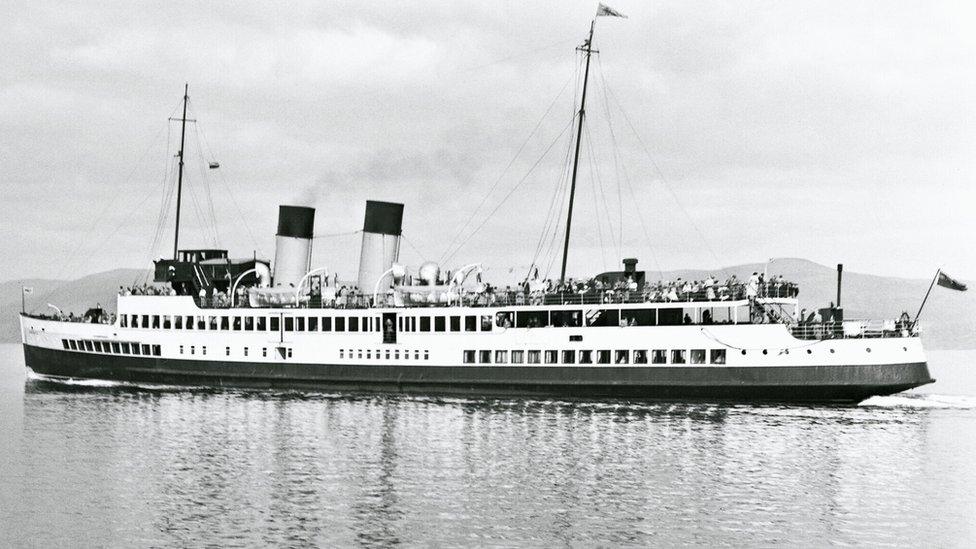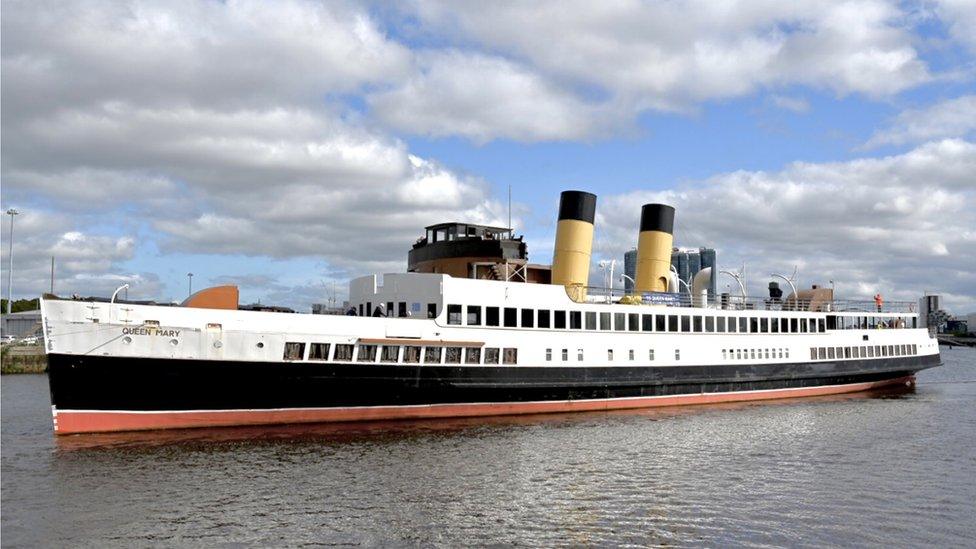Work to begin on TS Queen Mary steamer restoration
- Published

The TS Queen Mary has been moved from beside Glasgow Science Centre
A 90-year-old Clyde steamer has begun its restoration journey with the award of a £1m contract for repairs.
TS Queen Mary has been moved from beside Glasgow Science Centre to the nearby Govan Graving Docks for the first phase of the project.
Funnels and the wheelhouse will be completely rebuilt after the decks are strengthened so it can carry passengers again.
Up to 12 new jobs will be created as part of the ship's renovation.

TS Queen Mary, launched in 1933, is one of the last surviving steam turbine ships built in Scotland.
In its heyday it carried 13,000 passengers each week and was known as "Britain's finest pleasure steamer".
After being retired in 1977, it spent several years being used as floating restaurant on the Thames but it finally returned to the Clyde in 2016.
The actor Robbie Coltrane, who died last year, was an enthusiastic supporter of the restoration campaign while Princess Anne is the project's royal patron. The ship is named after her great grandmother.

TS Queen Mary carried thousands of passengers from Glasgow on "doon the watter" trips on the Clyde
An estimated £10m will be needed to fully restore the vessel, but the first phase can now go ahead thanks in part to a recent £1m anonymous donation.
The work will start with a 3D laser map scan of the ship's structure and the removal of the superstructure and teak decks to allow underdeck stiffening.
Next year, one of the historic Govan Graving Docks will be used for ship repair for the first time in more than 30 years when work starts on the hull and propeller shafts.
Peter Breslin, from Marine Projects Scotland which is carrying out the work, said: "Securing this contract is testament to our commitment and confidence in the business viability of Govan Drydock.
"As a fully operational ship repair and maintenance facility, it has the capacity to generate employment opportunities and contribution to the ongoing reinvigoration of the Clyde waterfront."
TS Queen Mary was built by shipbuilders William Denny in Dumbarton, for many years providing "doon the watter" trips from Glasgow to destinations such as Dunoon, Rothesay, Millport and Arran.
In 1935, two years after its launch, it was renamed Queen Mary II at the request of Cunard White Star Line to release the Queen Mary name for the much larger liner that was being built at the John Brown shipyard in Clydebank.
The Govan Graving Docks, which have lain derelict for years, were used for filming scenes for the Sam Mendes film 1917.
Their owner, New City Vision, have submitted plans to restore the site, with a mixture of homes, a visitor attraction and the restoration of one of the docks for ship repair.
- Published16 April 2023

- Published15 May 2016
